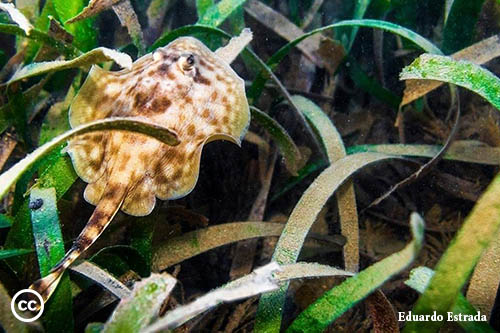Narcine brasiliensis
Rays
Environment and movement of the diurnal species
- The species is generally observed in a sandy/silty area.
- The species is generally motionless in its environment
- The species is generally found on or close to the seafloor.
- The species can be found between 1 and 43 Meters.
- Uncommon Species
- Hides in the sand.
Environment and movement of the nocturnal species
- The species is generally observed in a sandy/silty area.
- The species is generally seen moving in its environment.
- The species is generally found on or close to the seafloor.
General behaviour of the species
- The species is migrating
- Species generally solitary
- Hides in the sand.
- The animal is rather indifferent to the diver, though it remains on its guard
General characteristics of the species
- Maximum size : 54 cm
- The animal is a hunter low in the food chain.
- Diet : Sea worms - - Fishes
Relationship with humans
- The animal can produce an electric shock
- The species can be eaten but is of no particular culinary interest
 Lesser electric ray
Lesser electric ray Brasilianischer Zitterrochen
Brasilianischer Zitterrochen Kleine stroomrog
Kleine stroomrog Trembleur
Trembleur Tembladera brasileña
Tembladera brasileña